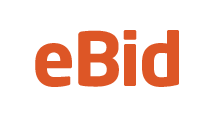Advert - The Speaking Clock - publicity poster from 1936 - postcard
- Condition : Used
- Dispatch : 2 Days
- Brand : None
- ID# : 93648979
- Quantity : 1 item
- Views : 1510
- Location : United Kingdom

- Seller : justthebook (+1675)
- Barcode : None
- Start : Sat 23 Feb 2013 15:55:11 (EDT)
- Close : Run Until Sold
- Remain : Run Until Sold
Checks/Cheques
 for 1 item(s) edit
for 1 item(s) edit
Shipping Calculator
More Listings from This Seller view all
Seller's Description
- Postcard
- Picture / Image: 'The Correct Time by Speaking Clock' - publicity leaflet for the introduction in London in 1936 -
- Publisher: Telecom Technology Showcase, London, c.1990s
- Postally used: no
- Stamp: n/a
- Postmark(s): n/a
- Sent to: n/a
- Notes / condition:
Please ask if you need any other information and I will do the best I can to answer.
------------------------------------------------
Postage & Packing:
UK (incl. IOM, CI & BFPO): 99p
Europe: £1.60
Rest of world (inc. USA etc): £2.75
No additional charges for more than one postcard. You can buy as many postcards from me as you like and you will just pay the fee above once. (If buying postcards with other things such as books, please contact or wait for invoice before paying).
Payment Methods:
UK - PayPal, Cheque (from UK bank) or postal order
Outside UK: PayPal ONLY (unless otherwise stated) please. NO non-UK currency checks or money orders (sorry).
NOTE: All postcards are sent in brand new stiffened envelopes which I have bought for the task. These are specially made to protect postcards and you may be able to re-use them. In addition there are other costs to sending so the above charge is not just for the stamp!
I will give a full refund if you are not fully satisfied with the postcard.
----------------------------------------------
Text from the free encyclopedia WIKIPEDIA may appear below to give a little background information (internal links may not work) :
*************
A speaking clock or talking clock service is a recorded or simulated human voice service, usually accessed by telephone, that gives the correct time. The first telephone speaking clock service was introduced in France, in association with the Paris Observatory on 14 February 1933.[1]
The format of the service is somewhat similar to those in radio time signal services. Every ten seconds, a voice announces ""At the third stroke, the time from BT will be [for example] twelve forty-six and ten seconds..."", with three beeps following. At the third beep, the time at that point is the time announced previously. Some countries have sponsored time announcements and include that in the message.
The services are traditionally useful in verifying whether time keeping equipment is functioning correctly in its automatic compensation to or from DST, or when clocks noticeably begin to ""lose time"". Other applications are if a cell phone's battery dies, wrist watch malfunctions, or to help time keepers adjust or synchronize many time keeping devices in an area, which might otherwise all end up on different deviations of time.
the United Kingdom, the speaking clock can be reached by dialling 123 on a BT phone line; the number may vary on other networks. A voice announces:
- ""At the third stroke, the time from BT will be (hour) (minute) and (second) seconds""
For times that are an exact minute, ""precisely"" is substituted for the seconds portion of the announcement. Similarly, announcements for times between the hour and one minute past the hour substitute ""o'clock"" for the (zero) minutes. Other operators run their own speaking clocks, with broadly similar formats, or redirect to BT's service.
A speaking clock service was first introduced in Britain on July 24, 1936. The mechanism used was an of array of motors, glass discs, photocells and valves which took up the floorspace of a small room. The voice was that of London telephonist, Ethel Jane Cain, who had won a prize of 10 guineas (£10.50) in a competition to find the right voice. Cain's voice was recorded optically onto the glass disks in a similar way to a film soundtrack.[11] The service was obtained by dialling the letters TIM (846) on a dial telephone, and hence the service was often colloquially referred to as ""Tim"". However this code was only used in the telephone systems of the cities of London, Birmingham, Edinburgh, Glasgow, Liverpool and Manchester. Other areas initially dialled 952 but with the introduction of Subscriber Trunk Dialling it was changed to 80 and later 8081 as more 'recorded services' were introduced and was standardised to 123 by the early 1990s.[citation needed]
type=printed postcards
theme=advertising
sub-theme=telecommunications
number of items=single
period=1945 - present
postage condition=unposted
Listing Information
| Listing Type | Gallery Listing |
| Listing ID# | 93648979 |
| Start Time | Sat 23 Feb 2013 15:55:11 (EDT) |
| Close Time | Run Until Sold |
| Starting Bid | Fixed Price (no bidding) |
| Item Condition | Used |
| Bids | 0 |
| Views | 1510 |
| Dispatch Time | 2 Days |
| Quantity | 1 |
| Location | United Kingdom |
| Auto Extend | No |





